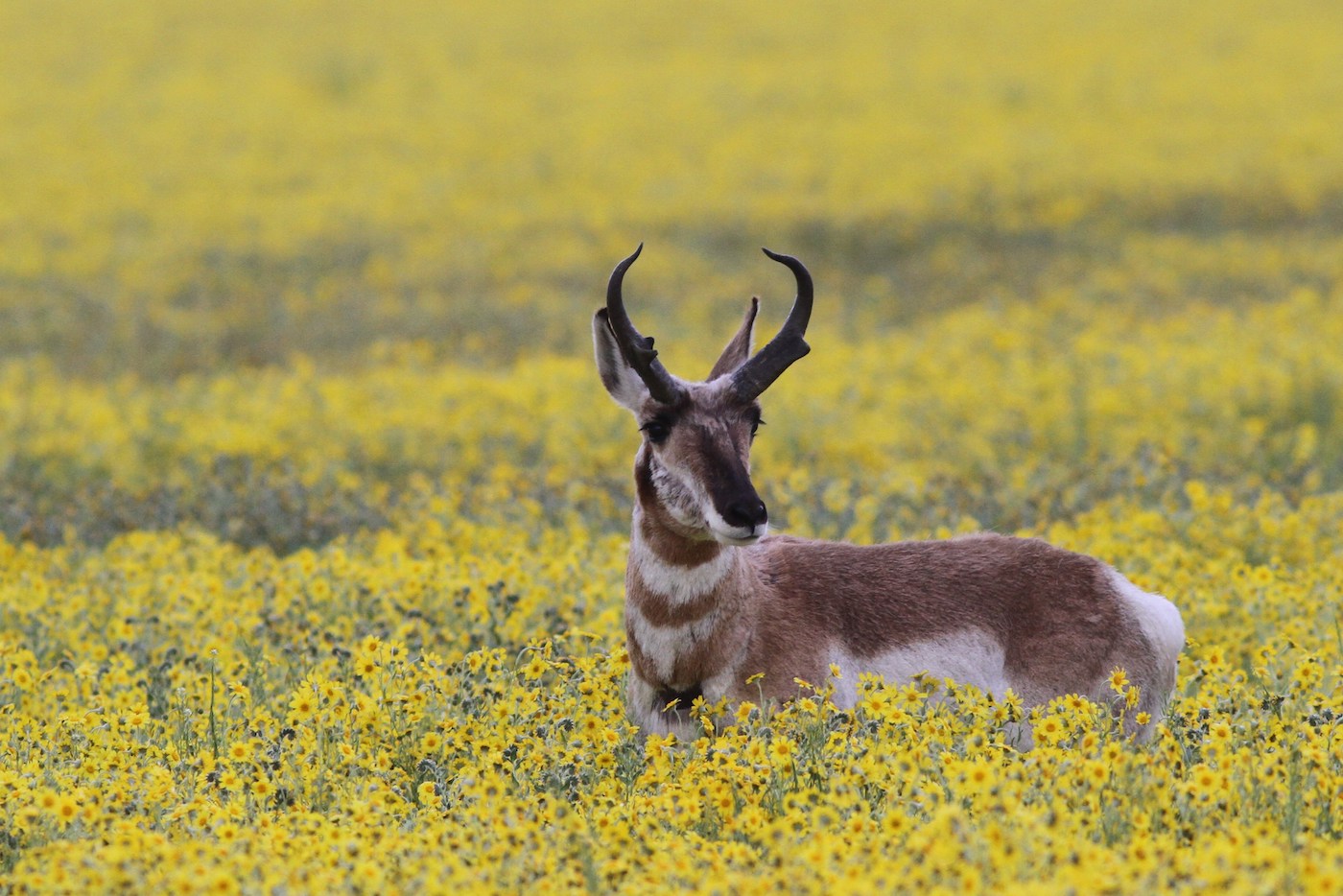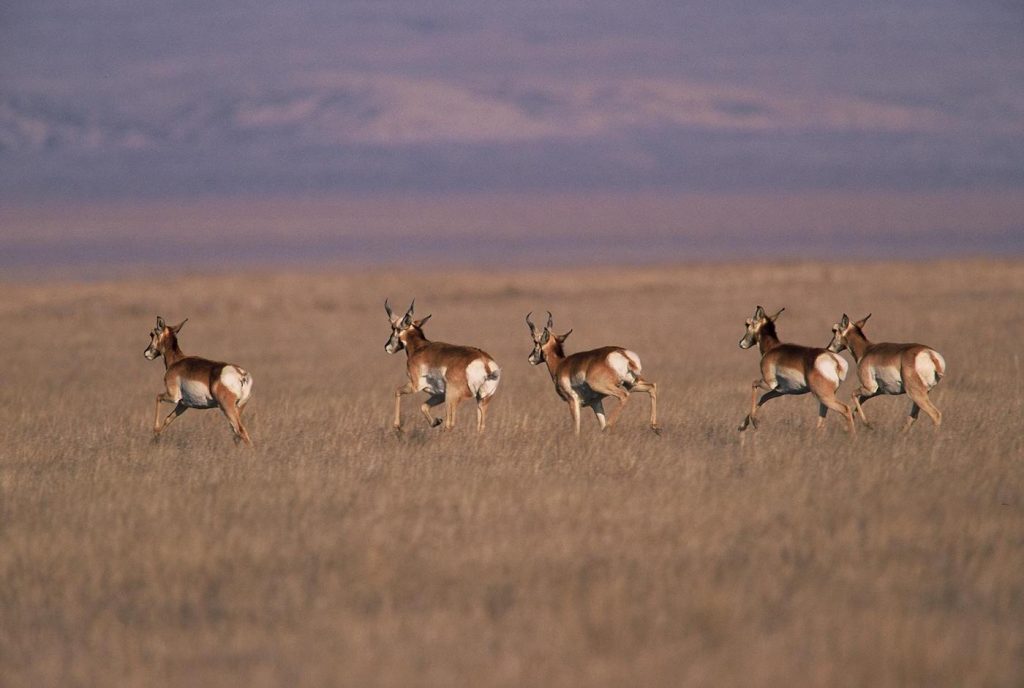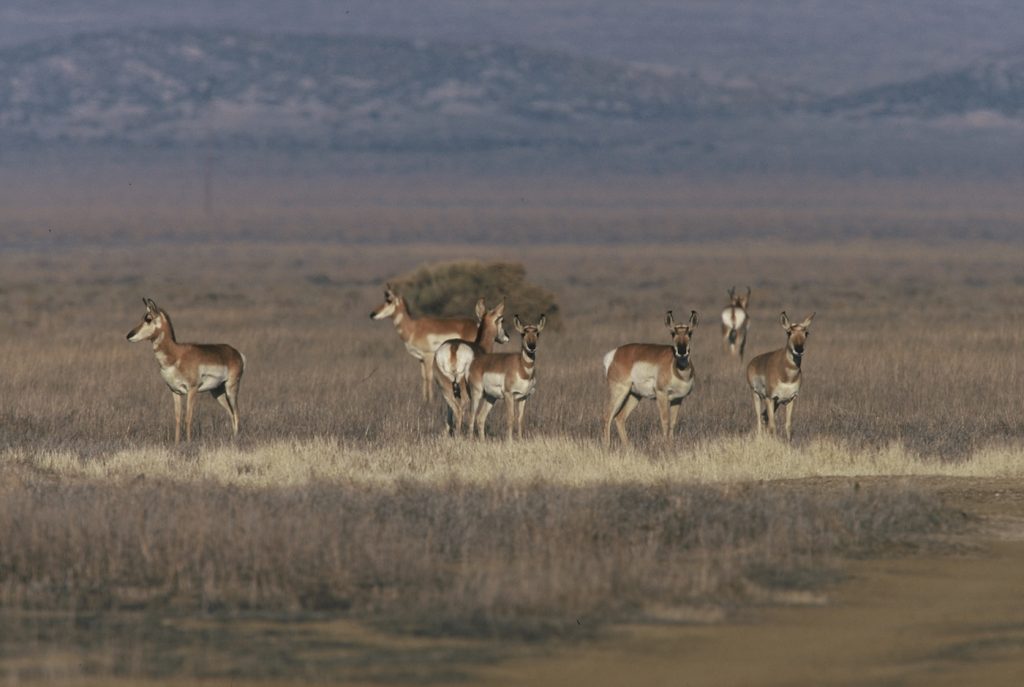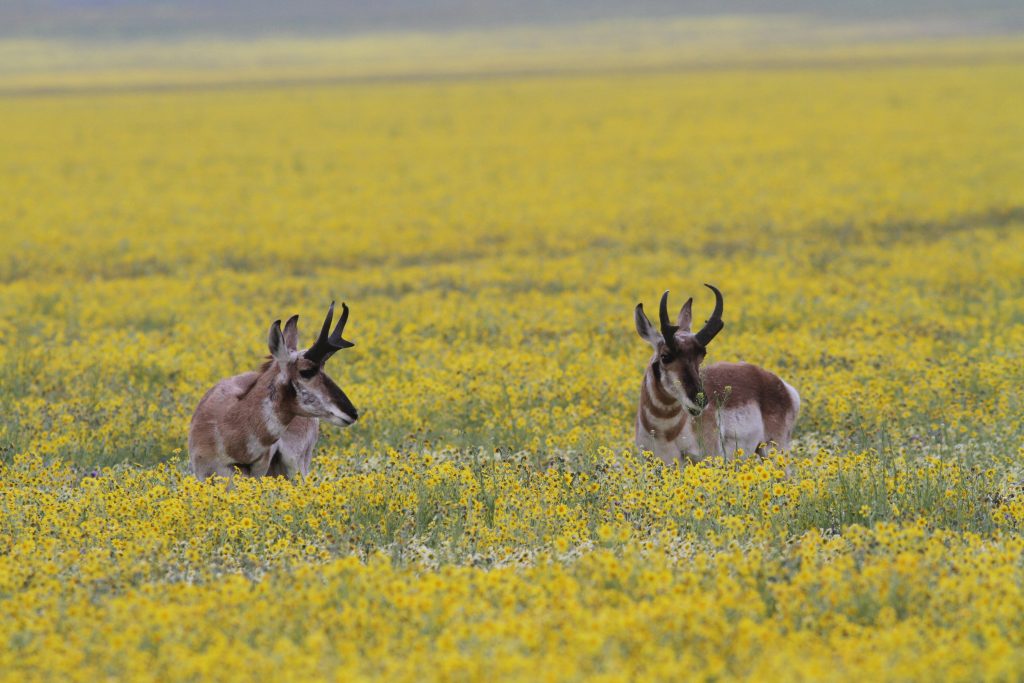Speed Thrills: Chronicles from the fastest land mammal in North America

I almost lost them in the densely vibrant fields of hillside daisies within the Carrizo Plain National Monument. They were about a half-mile west of where I stood, my Canon 300mm IS lens aimed in their direction.
I was hoping for them to meander my way, but with wildlife you never know. They have their own agenda. There were five pronghorn antelope frolicking in the lush wildflowers, another Super Bloom in all its glory. The bull dipped its head, leading with its hollow antlers to thrash and toss the yellow blooms skyward. Soon, the herd turned and headed my way.
Within minutes I could see their long, batting eyelashes, no binoculars or zoom lens required. That half-mile distance had been obliterated, and now they were a mere 50 feet from where I stood motionless and silent, full frame in my viewfinder. At one point I dropped my camera to my side and simply marveled at an animal that can outrun the wind, certainly outrun any predator across the last remaining grasslands of the Golden State.
Initially, the four other pronghorn were not as inquisitive, not as bold; instead they approached cautiously, methodically following the burly pronghorn bull but from a short distance. Two of them were youngsters, opting to stay behind their parents. However, once it was clear that there was no threat, they became more playful, loping in the wildflowers after one another until their parents grew bored with me, heading west to the rolling Caliente Mountains that border the Carrizo Plain.
Pronghorn antelope have long-distance cousins from another continent. As it turns out, pronghorn are not antelope after all. They fall under the category of Giraffoidea. Their closest living relatives are giraffes and the okapi, a unique looking mammal, both being from Africa.
Western States
Pronghorn antelope are typically associated with western states such as Montana, Wyoming, and Idaho, but here in California they can be spotted in the northeastern portion of the state.

Closer to home, a mere 2.5-hour drive north of Montecito, there are small herds that enjoy the wide-open spaces of the Carrizo Plain National Monument. Known as the last of the Golden State’s historic grasslands, proper foraging habitats still exist between the Caliente and Temblor Mountain ranges.
After coming close to extinction in the 1800s and early 1900s efforts have been taken to help restore the population, though only to a fraction of its historic range. Today, pronghorn can be seen on the Carrizo Plain National Monument, where a herd was translocated from northeastern California in the late 1980s.
Built for Speed
I heard hooves thundering across the Carrizo Plain south to north toward several dry vernal pools. I found the pronghorn through my binoculars scanning the grassland habitat for potential threats that had them sprinting across the open grasslands.
It was two coyotes just loping along and there was no chance of them running down any of the 32 animals in the herd. There were, however, several fawns well protected within the middle of the herd, so the pronghorn didn’t wait around for the canids to pursue them as shards of grass and dust wafted in their wake.


It appeared as if the two adult coyotes were feeling out the situation, maybe knowing it would have been a monumental task to bring down one of the fawns. In any event, it was the speed of the pronghorn that kept them out of harm’s way. Something that has worked well for them for thousands of years.
The African Savannah and its Southwest deserts have the sleek, fleet-footed cheetah, the fastest land mammal in the world, clocking out at 70 miles per hour. Skyward, the peregrine falcon tucks its wings and can dive after prey at over 200 miles per hour, clipping and injuring its prey, even killing it on the fly with fighter jet precision. But in North America, the pronghorn antelope is the fastest land mammal on the continent, topping speeds of 55 miles per hour.
Pronghorn are also strategic runners. They have been observed running with at least 13 distinct gaits. In an all-out run, full stride sees them reach 8 yards per stride. The top speed is dependent upon the length of time over which it is measured. Pronghorn can run 35 mph for 4 miles, 42 mph for 1 mile, and 55 mph for a half mile. Although pronghorn are considered to be the second-fastest land animal, second only to the African cheetah, it can sustain high speeds longer than its lanky, spotted counterpart.
It is not just that pronghorn can run fast. Their physical traits contribute to them doing so. There are many reasons why pronghorn antelope are the fastest land animal in the Western Hemisphere.
Compared to its body size, the pronghorn possesses a large windpipe, heart, and lungs. This enables them to inhale large amounts of air when running at top speeds. Pronghorn antelope are also equipped with hooves possessing two elongated, pointed, cushioned toes which help these fleet-footed creatures absorb shock when running full tilt. There bone density is light, and their hairs are hollow. All of these physical characteristics give them advantages no other predator can match across North America.





